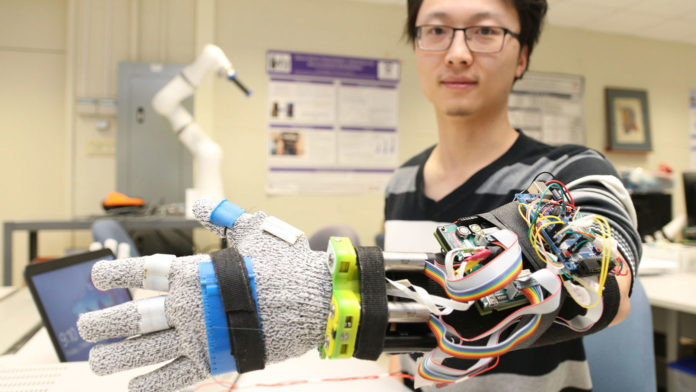For a cost of less than $1,000, researchers at Western University have developed custom-fit gloves designed to help people with Parkinson’s-associated tremors regain their independence.
Parkinson’s is a neurodegenerative disorder that causes involuntary muscle contractions that manifest as tremors in around a quarter of diagnosed patients.
“If you have seen anybody with Parkinson’s that has tremors, they have them in their entire body, but it’s the ones in their fingers that really prevent them from performing the activities of daily living,” says Ana Luisa Trejos, professor of electrical and computer engineering professor at Western University, and lead investigator of the Wearable Biomechatronics Laboratory Group.
The trouble with other tremor suppression devices is that they restrict movement in general, which can make it even harder to struggle through movements that the user actually wants to make. And in the worst case scenario, suppressing movements at the level of the elbows or wrists can further exaggerate tremors in the fingers.
Trejos’s new design uses a system of sensors and motors to track voluntary movements and separate them from the involuntary tremors. The gloves can then suppress the tremor without stopping the intended movement.
The software that controls the gloves was developed through the participation of research subjects with Parkinson’s, and the ethics approval process is already underway to include them in testing the gloves.
The current prototype glove was created for the left hand of Western doctoral student Yue Zhou, who 3D printed its key components for a custom fit. 3D printing will also enable future customization to each user.
The team is also working on improving the glove’s hardware to make it more practical to wear, including reducing the size of the glove’s controller and improving its battery system. Once these pieces are all in place, they hope to find commercial partners to bring the gloves to the market.
If effective, this wearable technology could restore motor control to Parkinson’s patients with tremors, allowing them to do all kinds of daily tasks most people take for granted, from buttoning a shirt to eating with a spoon. And that could help millions of people maintain independent living for much longer.








































